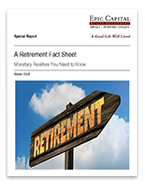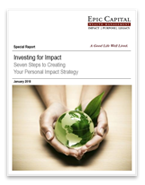Managing Drug Costs
Nov 27, 2020
Are prescription drug costs burdening your finances? Some people find it a challenge to manage the cost of prescription drugs. Americans pay an average of $1,200 per year for medicine. For those facing greater and more dangerous ailments, some drug costs are $10,000 per month or even lump sums in excess of $80,000 for certain drug therapies. Yes, health insurance and Medicare Part D can help you, but not everyone has access to Medicare, and not every insurance company has the same formulary. This means that your coverage may fall short—not something you want to hear when wrestling with a major diagnosis.1
How can a household try to manage drug costs? There are some approaches that may help.
Firstly, shop around & compare Part D plans annually. As you shop, keep in mind that plans with smaller premiums may have higher out-of-pocket drug costs. Some plans also limit monthly doses of certain drugs in their coverage or request patients to try less costly drugs before branded drug costs, which can be higher, can be prescribed.
Consider generics. A 2019 report from the Association for Accessible Medicines states that Americans saved $293 billion on generic drugs, with nearly $2 trillion saved over the previous decade. Most generic prescriptions get filled for $20 or less, while name-brand copays average over $40. Short version? Those savings are considerable, when available, and they add up.2
Stay within the plan network. If you go out of network for non-preferred medications, your cost for those medications may rise. That said, shopping around at different pharmacies may yield some savings.
Ask a compounding pharmacy if it can make a medication for you. In such an instance, the savings could be substantial.
Health Savings Accounts (HSAs) & Roth IRAs may also be useful. If you do not yet qualify for Medicare coverage, you may have the choice to create an HSA, which must be used in conjunction with a high-deductible health plan. Since HSAs are funded with pre-tax dollars, so the contributions will reduce your taxable income.3
There are also some HSA rules and limitations to consider. If you are single, you are limited to a $3,600 contribution for 2021, and $7,200 if you have a spouse or family. Those limits jump by a $1,000 “catch-up” limit for each person in the household over age 55.3
If you spend your HSA funds for non-medical expenses before age 65, you may be required to pay ordinary income tax as well as a 20% penalty. After age 65, you will be required to pay ordinary income taxes on HSA funds used for non-medical expenses. HSA contributions are exempt from federal income tax; however, they are not exempt from state taxes in certain states.
If you are the original owner of a Roth IRA, you do not have to start taking distributions at age 72. And if you are least 59½ years old and have owned the Roth IRA for at least five years, any distributions you take may be exempt from federal taxes.3
Lastly, see your doctor on a regular basis. A routine checkup could alert you and your primary care physician to what could become a chronic ailment. If treated early, that ailment could be allayed, even overcome. Undetected or untreated, it could result in a long-term health problem with long-run financial impact.
For additional insights and resources, be sure to sign up for our Weekly Market Commentary, follow our YouTube channel where we regularly post our Epic Market Minute videos, follow us on LinkedIn, or like us on Facebook. And as always, please don’t hesitate to reach out to a dedicated service professional at Epic Capital.
Tags: Certified Financial Planner Charlotte NC, charlotte NC, Family Wealth, financial advisor, Health Care Needs, Health Care Savings, Medicare, Personal Finance, Spending Habits
More Insights
Key Takeaways Volatility came back with a vengeance this week as selling pressure in the mega cap space dragged down the broader market. Counterbalancing weakness in these heavyweight names poses a challenge for the rest of the market. Overbought conditions can also be blamed for the recent weakness. The S&P 500 reached a 14.9% premium … Continue reading “Market Update – Assessing the Technical Damange”
Life insurance can be an excellent tool for charitable giving. Not only does life insurance allow you to make a substantial gift to charity at relatively little cost to you, but you may also benefit from tax rules that apply to gifts of life insurance.
When you think of Social Security, you probably think of retirement. However, Social Security can also provide much-needed income to your family members when you die, making their financial lives easier. Your family members may be eligible to receive survivor benefits if you worked, paid Social Security taxes, and earned enough work credits. The number … Continue reading “Social Security Survivor Benefits”
Information vs. instinct. When it comes to investment choices, many people believe they have a “knack” for choosing good investments. But what exactly is that “knack” based on? The fact is, the choices we make with our assets can be strongly influenced by factors, many of them emotional, that we may not even be aware … Continue reading “Making Investment Choices”
As a business owner, you should carefully consider the advantages of establishing an employer-sponsored retirement plan. Generally, you’re allowed certain tax benefits for establishing an employer-sponsored retirement plan, including a tax credit for establishing the plan and a deduction for contributions you make. In return, however, you’re required to include certain employees in the plan, … Continue reading “Retirement Plans for Small Businesses”
Services
Epic Capital provides the following comprehensive financial planning and investment management services: Learn More >


 Top of Page
Top of Page











